By Caitlin Wilson 24 June 2022
Keeping up with weeds can be a full time job sometimes. It is the least pleasant part of maintaining a summer garden. We all want to spend as little time as possible on tasks we don’t enjoy. Read on for tools and strategies that can help you reduce this time consuming task.
Tilling
You can use tilling strategically to control weeds at the start of your season. 2-4 weeks before you wish to start your garden bed, till the weeds under. If you do this before the weeds have produced flowers, it kills the weeds that are actively growing. This will also bring weed seeds up to the soils surface. Right before you wish to plant, remove all the weed seedlings and then plant your garden. Try not to disturb the soil after this to avoid bringing more weeds to the surface. If you do this strategically over time, it can help eliminate weeds by reducing the number of weed seeds in your soil. This may be a good strategy if you find your soil to be particularly weedy year after year.
Hand pulling weeds
This is the tried and true method of weeding. It doesn’t require any tools but it can be a slow and tedious task. Not all weeds can be completely pulled by hand as some are fragile and will break off when pulled. This method is best suited for areas where weeds are growing right next to plants. In cases like this tools may damage your plants roots.
Hand tools
There are several hand tools that can help you weed faster and easier.
Some of my most used tools are:
- Scuffle hoe/Stirrup hoe
- Pointed Shovel
- Dandelion weeding tool
- Garden rake
Scuffle hoe/stirrup hoe
Scuffle hoes come in a variety of shapes but the basic premise is that you move the hoe underneath the first inch or two of soil to cut small weeds off at the head when they are young. It’s like a vegetable peeler for the ground! This method can knock down weeds quickly when they are densely growing or once weeds are under control, the hoe can be used to quickly take out small weed seedlings before they become an issue. This tool allows me to weed less often because killing weeds when they are small and vulnerable is much easier than hand pulling when they are older!
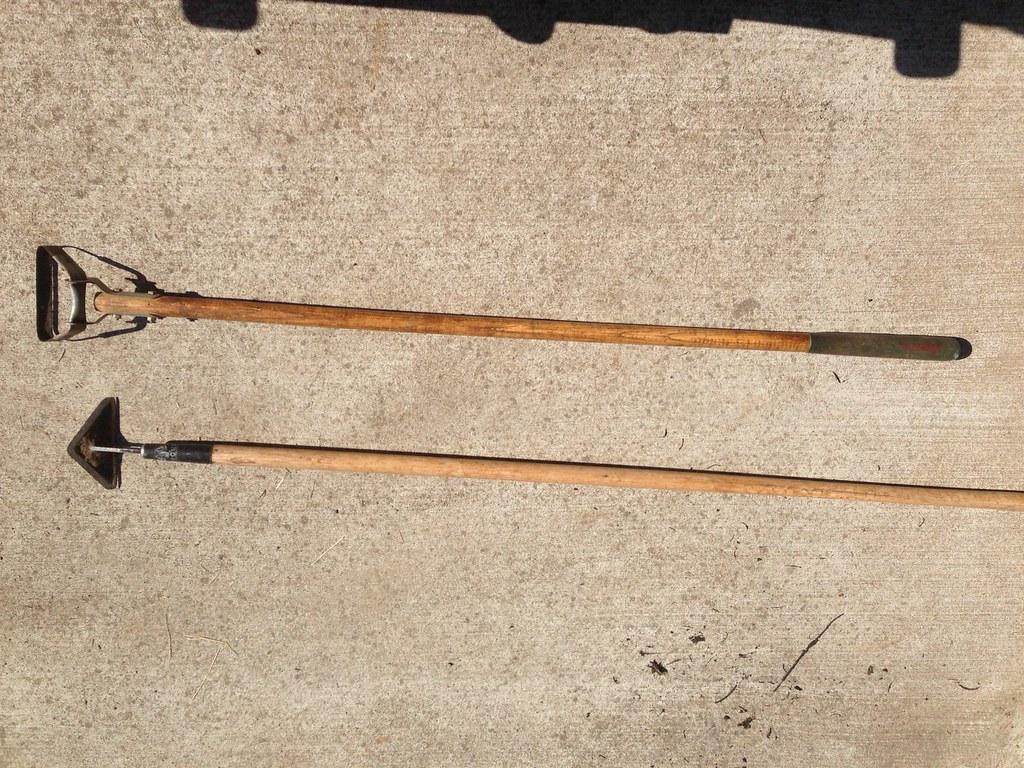
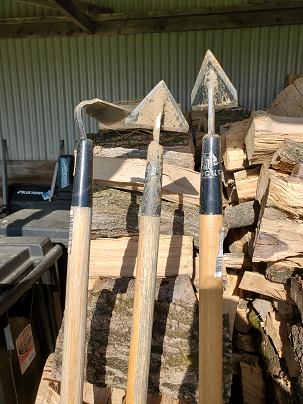
Pointed shovel
When you have a large and in charge weed, sometimes you just need a shovel to remove the whole thing. You can get a small hand version (garden trowel) or a large version (spade).
A garden trowel can be used with one hand to dig a small hole, to pull weeds, and to mix in soil amendments.
A spade can be used to dig a large hole, to dig down to completely remove a weed’s roots, or to break up a large amount of dirt.
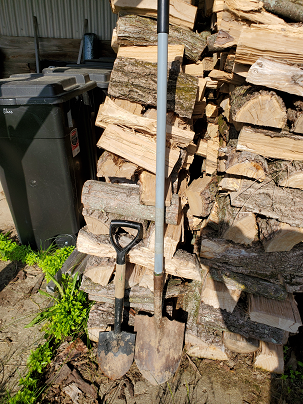 |
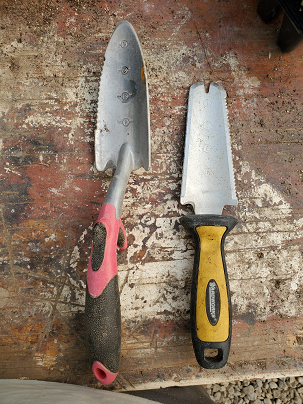 |
|---|
Dandelion weeding tool
A dandelion weeding tool is a small metal tool that is forked at one end. The fork is used to gain leverage to grab onto a weed with a long tap root like a dandelion has. This tool helps you to remove a tap root intact. The more tap roots you can remove in tact, the better the chances you have of not having the weed come back.
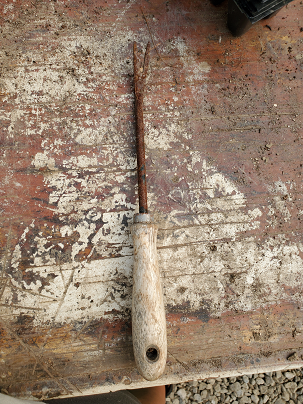 |
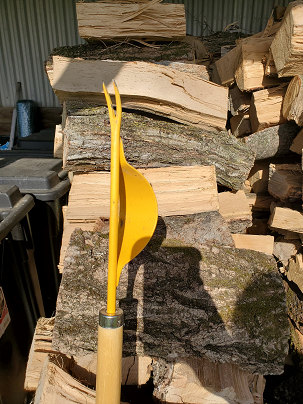 |
|---|
Garden rake
A hard garden rake can be used to gather all the weeds you have pulled so you can compost or dispose of them. This tool is also good to spread mulch. A leaf rake is not very useful for gardening because it is not rugged enough.
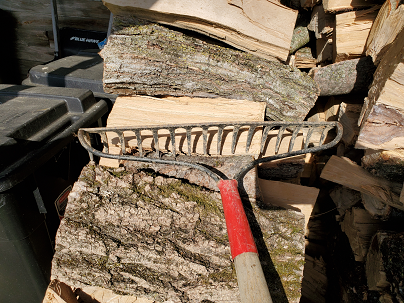 |
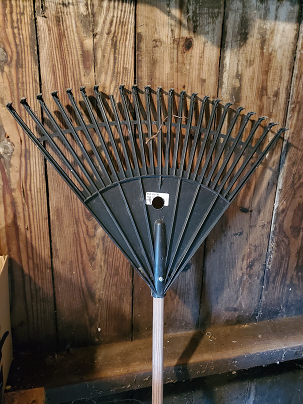 |
|---|
Mulch
There are many good reasons to mulch your garden. Mulch keeps the soil cooler, holds moisture the soil, and suppresses weed growth. The mulch blocks light from getting to the soil which slows water evaporation and keeps weed seeds from germinating. Most people use straw, fallen leaves, untreated woodchips, or dried grass clippings to mulch their beds. Since these materials are biodegradable, you can leave these materials to decompose in place. The mulch will actually help build your soil as it breaks down!
Planting close
Planting your crops close together can help shade out your soil. Once your crops are large enough, they will inhibit the growth of some weeds because your crops will be competing for nutrients that the weeds may otherwise use. The crops can also block the light to the soil, which can prevent weed seeds in the soil from germinating.
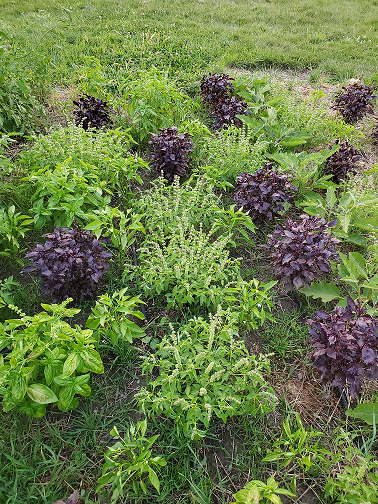
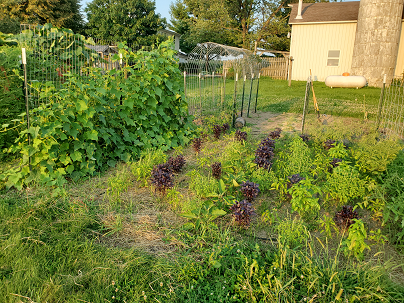
Cover crops
You should never leave your soil bare. When the soil is bare, weeds can take hold. Additionally bare soil has more chance of eroding when you get excess rain. Once you are done with your garden for the year, you should plant a cover crop such as radishes, winter wheat, oats, sorghum, or clover to act as a living mulch while your garden is not in use. This crop is used to keep your soil and nutrients in place in your garden and it helps to provide competition for weeds so weeds can’t as easily take hold
Cover crops are often referred to as green manure because once the crop is terminated, it helps amend your soil as it decays. Cover crops are especially important for people with heavy clay soil. Heavy clay soil holds nutrients very well, but it’s rather sticky. This stickiness can inhibit good root development and make it hard for your seedlings to grow rapidly. Clay soil needs to be regularly amended with plant matter to break up the sticky clay particles so good root development can occur and so nutrients can be utilized. If you have had issues with stunted growth and defective root vegetables, you could benefit from planting cover crops during the off season.


